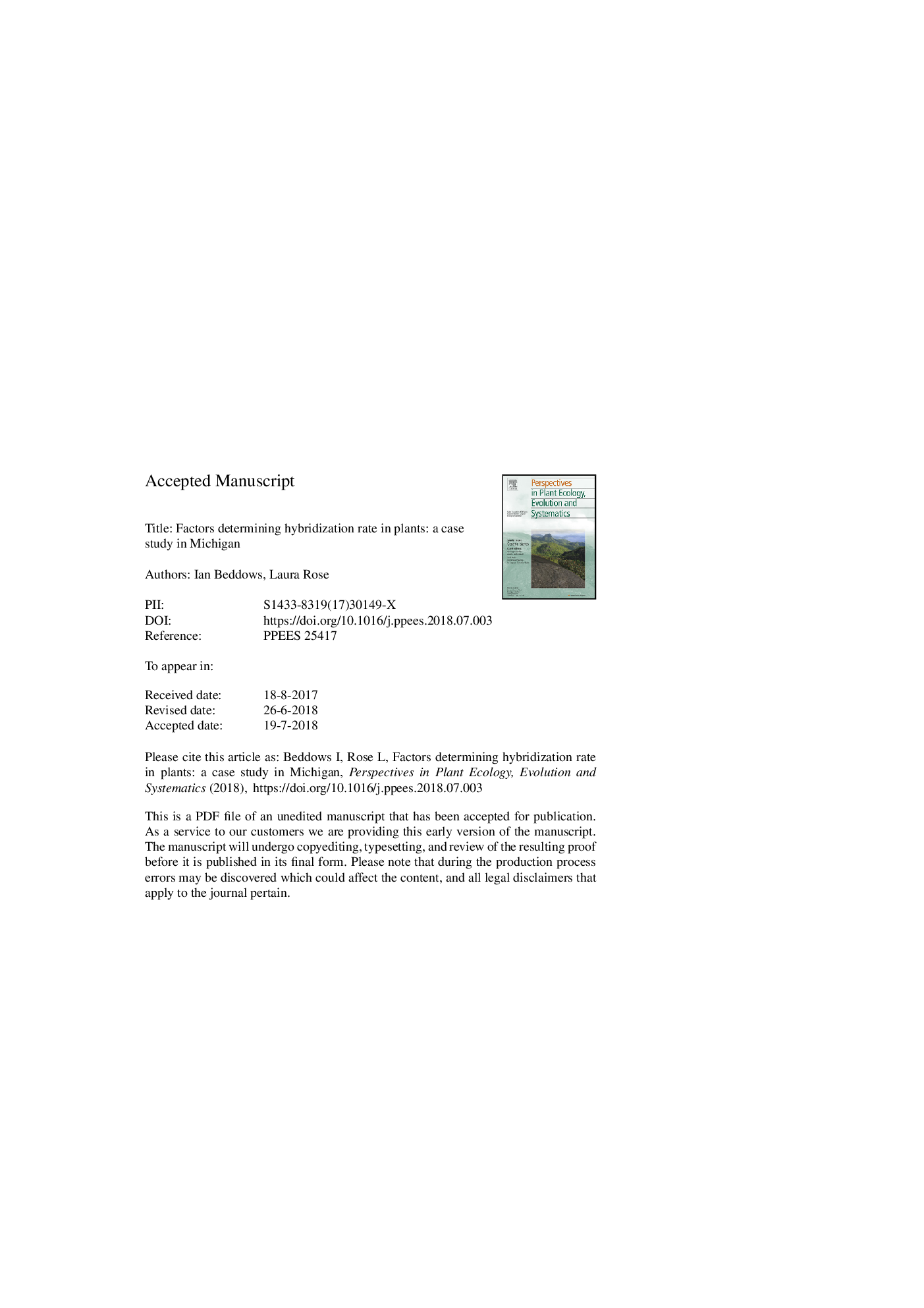| Article ID | Journal | Published Year | Pages | File Type |
|---|---|---|---|---|
| 8849474 | Perspectives in Plant Ecology, Evolution and Systematics | 2018 | 36 Pages |
Abstract
From our data, more than 17% of species produce hybrids with other species in the wild. There was no systematic association between phylogeny and hybridization rate, but taxonomic order was a significant independent variable in the regression model and the majority of hybrids were restricted to a handful of taxonomic groups. Life history, life form, and habitat disturbance were all significant explanatory variables for hybridization likelihood. Nearly 97% of hybridizing taxa were perennial with fern allies and woody groups found to hybridize the most. The data also indicate that the rate of hybridization increased with greater ecological disturbance. Interestingly, hybridization rate was positively correlated with the number of herbarium collections and this is potentially a confounding variable in quantifying the true frequency of hybridization.
Related Topics
Life Sciences
Agricultural and Biological Sciences
Ecology, Evolution, Behavior and Systematics
Authors
Ian Beddows, Laura E. Rose,
